What are the advantages of zirconia ceramic nozzles
In high-precision fluid control fields such as industrial spraying, surface treatment, and environmental dust removal, the performance of nozzles directly affects production efficiency and product quality. Traditional metal or plastic nozzles often have a short lifespan and reduced accuracy due to wear, corrosion, or high-temperature deformation. Zirconia ceramic nozzles, with their unique material properties, have become an ideal alternative to traditional solutions.
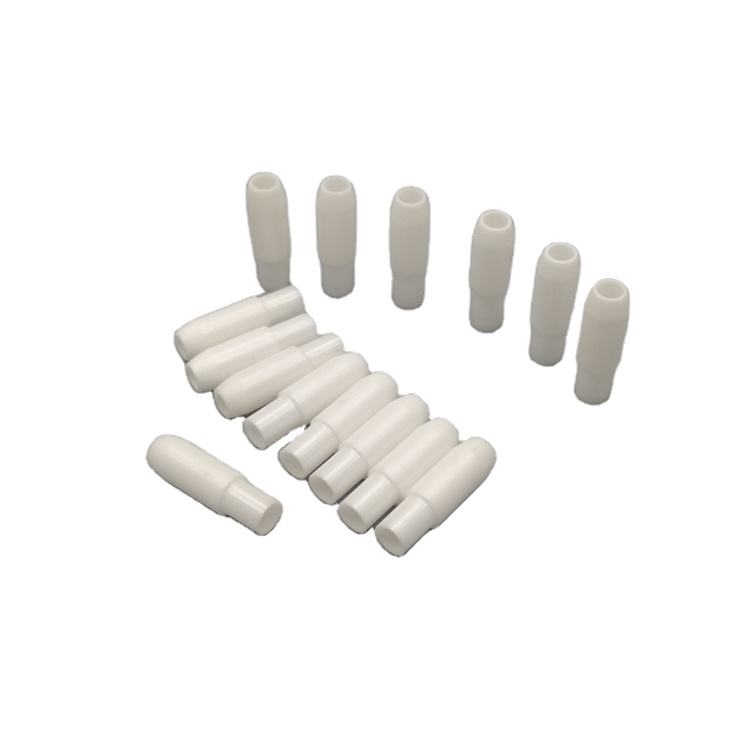
Material performance advantages: Hardcore characteristics break through traditional limitations
- Ultra high hardness and wear resistance
The Mohs hardness of zirconia ceramics (ZrO ₂) is as high as 8.5 (close to diamond), which is three times that of 304 stainless steel and 1.5 times that of hard alloys. In high wear scenarios such as high-pressure sandblasting and water cutting, the wear rate is only 1/50 of that of metal nozzles, significantly extending their service life.
Addressing pain points: Traditional metal nozzles are prone to deformation of the inner hole due to sand particle impact during sandblasting, resulting in unstable flow rate and offset spray angle. On the other hand, zirconia ceramic nozzles can maintain long-term accuracy and reduce the frequency of downtime and replacement. - Chemical corrosion resistance
Zirconia ceramics have stable chemical properties in acids, bases, salts, and organic solvents, and their corrosion resistance far exceeds that of metallic materials. For example, in a highly corrosive environment containing chloride ions (Cl ⁻), metal nozzles may fail within weeks, while ceramic nozzles can operate stably for several years.
Addressing pain points: When spraying corrosive liquids in the chemical and electroplating industries, metal nozzles are prone to erosion and leakage, while ceramic nozzles can avoid such risks and ensure production safety. - High temperature resistance and thermal stability
The melting point of zirconia ceramics is as high as 2715 ℃, and they can still maintain structural stability at high temperatures. In scenarios such as high-temperature flame spraying and metal melting, its thermal expansion coefficient is only one-third of that of metals, and it can withstand instantaneous high temperatures above 1000 ℃ without deformation.
Addressing pain points: Metal nozzles are prone to softening and clogging at high temperatures, while ceramic nozzles can maintain a constant flow rate to ensure uniform spraying. - Surface smoothness and adhesion resistance
After precision machining, the surface roughness of zirconia ceramics can reach Ra0.1 μ m or less, far lower than the Ra0.8 μ m of metal nozzles. A smooth surface can reduce fluid resistance, prevent particle adhesion, and avoid nozzle clogging.
Addressing pain points: When spraying viscous liquids in the food and pharmaceutical industries, metal nozzles are prone to residual materials causing cross contamination, while ceramic nozzles have easy to clean characteristics that meet hygiene standards.
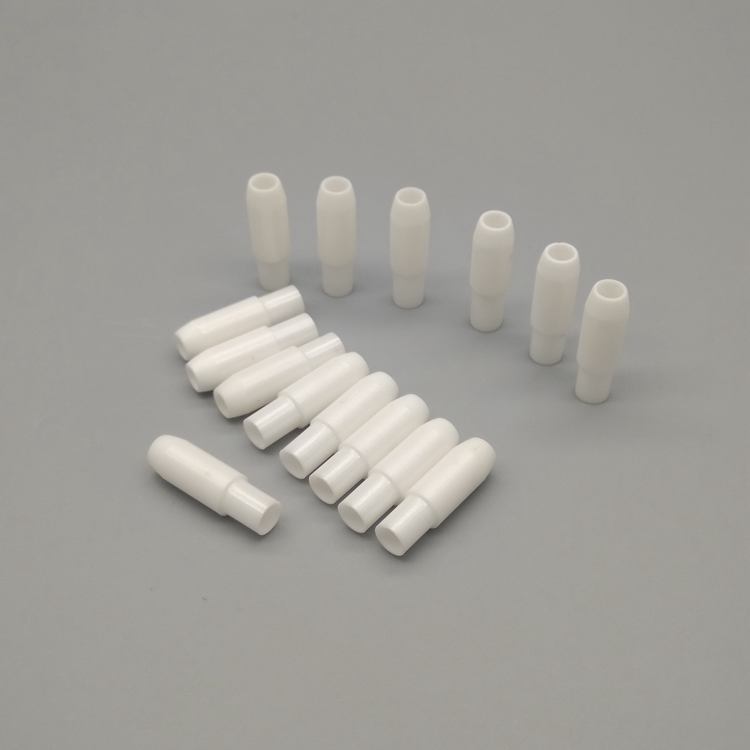
Application scenario advantage: precise adaptation to high demand industries
- Industrial spraying and surface treatment
Flame spraying/plasma spraying: The high-temperature resistance of ceramic nozzles ensures uniform spraying of molten particles, improving coating density and adhesion.
Sandblasting treatment: High hardness ceramic nozzles can withstand high-speed sand particle impact and are suitable for scenarios such as ship rust removal and surface strengthening of aviation components.
Electrostatic spraying: Ceramic materials have good insulation properties, avoiding the risk of sparks caused by static electricity accumulation in metal nozzles and improving safety. - Environmental protection and dust removal field
Wet dust removal: Ceramic nozzles are resistant to acid and alkali corrosion, suitable for flue gas desulfurization and denitrification systems in waste incineration plants and chemical plants, reducing equipment maintenance costs.
Spray of desulfurization tower: Precision machined ceramic nozzles can generate uniform mist droplets, improve desulfurization efficiency, and reduce liquid to gas ratio. - Food and pharmaceutical industry
Syrup/spice spray: The ceramic nozzle surface is smooth and not prone to bacterial growth, meeting FDA food grade certification requirements.
Drug microencapsulation: High precision ceramic nozzles can control droplet size distribution, improving drug encapsulation efficiency and stability. - Electronic and semiconductor manufacturing
Photoresist spraying: Ceramic nozzles are resistant to organic solvent corrosion, avoiding metal ion contamination of the wafer surface.
Chip cleaning: High temperature ceramic nozzles can be used in conjunction with ultrapure water to ensure that there are no residual metal impurities during the cleaning process.
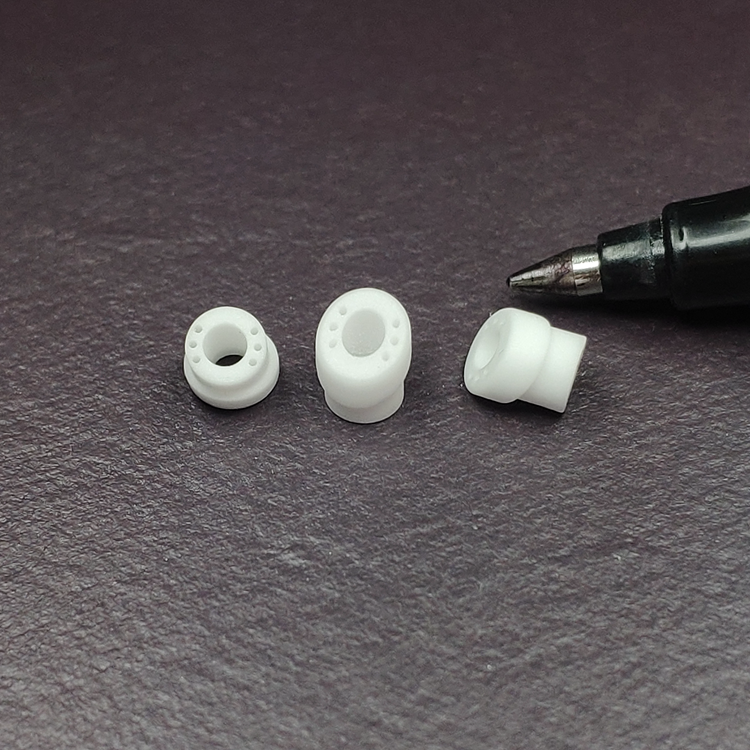
Cost benefit advantage: Long term use reduces overall costs
- Extend lifespan by 5-10 times
Taking sandblasting treatment as an example, the average lifespan of metal nozzles is about 200 hours, while zirconia ceramic nozzles can reach 1000-2000 hours, reducing replacement frequency and downtime losses.
Case: After replacing ceramic nozzles in a certain automotive parts factory, the annual maintenance cost decreased by 60% and production efficiency increased by 15%. - Energy consumption reduction and efficiency improvement
The smooth inner wall of ceramic nozzles can reduce fluid resistance and lower pumping pressure requirements. For example, in dust removal systems, using ceramic nozzles can save water pump energy consumption by about 10% -20%.
Data support: After the renovation of the desulfurization tower in a certain steel plant, the annual energy savings reached 500000 kWh, which is equivalent to reducing carbon dioxide emissions by 380 tons. - Reduce the rate of defective products and waste materials
High precision ceramic nozzles can ensure uniform fluid spraying, avoiding problems such as uneven coating thickness and spray dead corners caused by nozzle deformation.
Industry feedback: After a certain 3C electronics factory adopted ceramic nozzles, the product defect rate decreased from 3% to 0.5%, saving over 2 million yuan in annual rework costs.
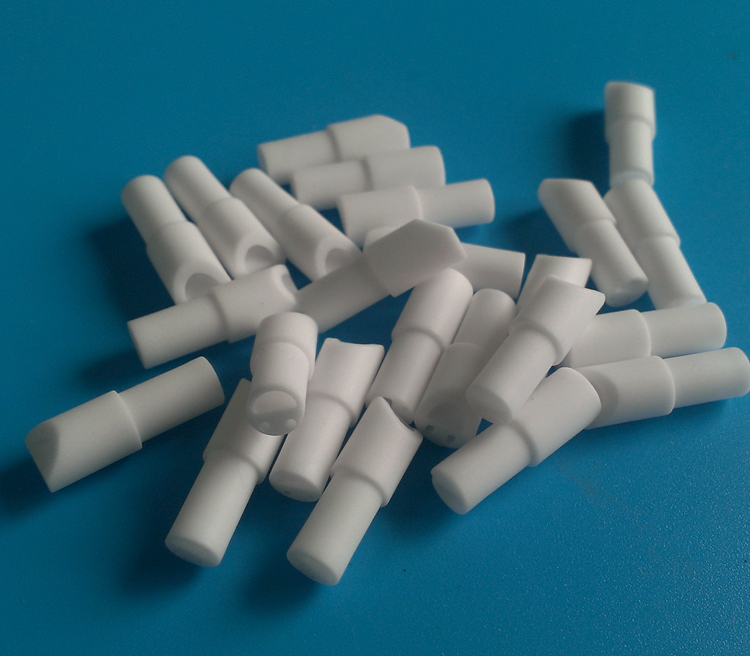
Technical parameters and customized services
Material: Zirconia ceramic (ZrO ₂+3% Y ₂ O ∝ stabilizer)
Hardness: Mohs 8.5 grade
Temperature resistance range: -50 ℃ to 1000 ℃ (instantaneous temperature resistance of 1200 ℃)
Corrosion resistance: resistant to strong acids (pH=1) and strong alkalis (pH=14)
Processing accuracy: Inner hole roundness ≤ 0.005mm, surface roughness Ra ≤ 0.1 μ m
Customization options: Size, shape, interface type (thread/flange) can be designed as needed
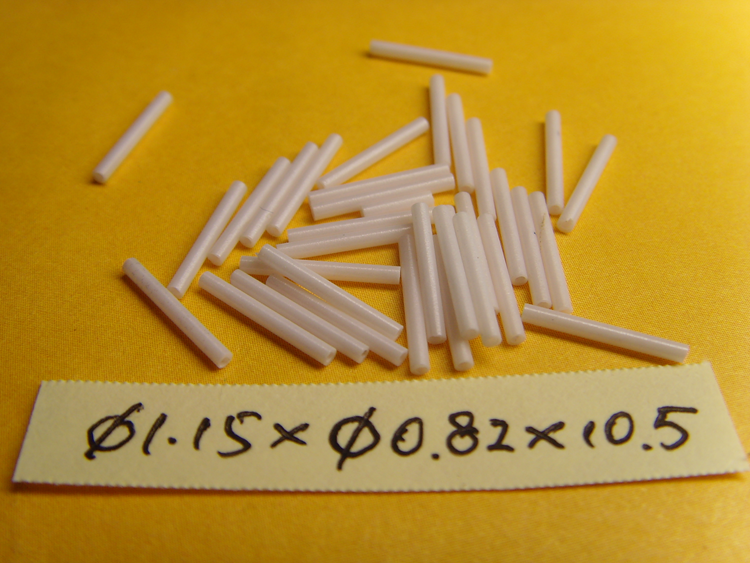
Zirconia ceramic nozzles, with their four core advantages of wear resistance, corrosion resistance, high temperature resistance, and high precision, have become key components for fluid control in industries such as chemical, environmental protection, electronics, and food. Although the initial procurement cost is higher than that of metal nozzles, their long lifespan, low maintenance requirements, and high efficiency performance can bring significant comprehensive cost savings to users.
Brudeze Ceramics supplies and sells a wide range of high-quality quartz glass, including alumina ceramics, zirconia ceramics, silicon nitride ceramics, aluminum nitride ceramics, silicon carbide ceramics, boron carbide ceramics, bioceramics, machinable ceramics, etc. We can meet the customization requirements of various ceramic products.
PREVIOUS:What is an alumina ceramic nozzle
CATEGORIES
LATEST NEWS
- High-temperature resistance...
- What is the wear resistance...
- What is the hardness of cer...
- Aluminum oxide ceramic cust...
- What are the main aspects o...
- What are the mechanical pro...
- Thermal properties of zirco...
- What properties should be c...
- What are the mechanical pro...
- What are the main advantage...
